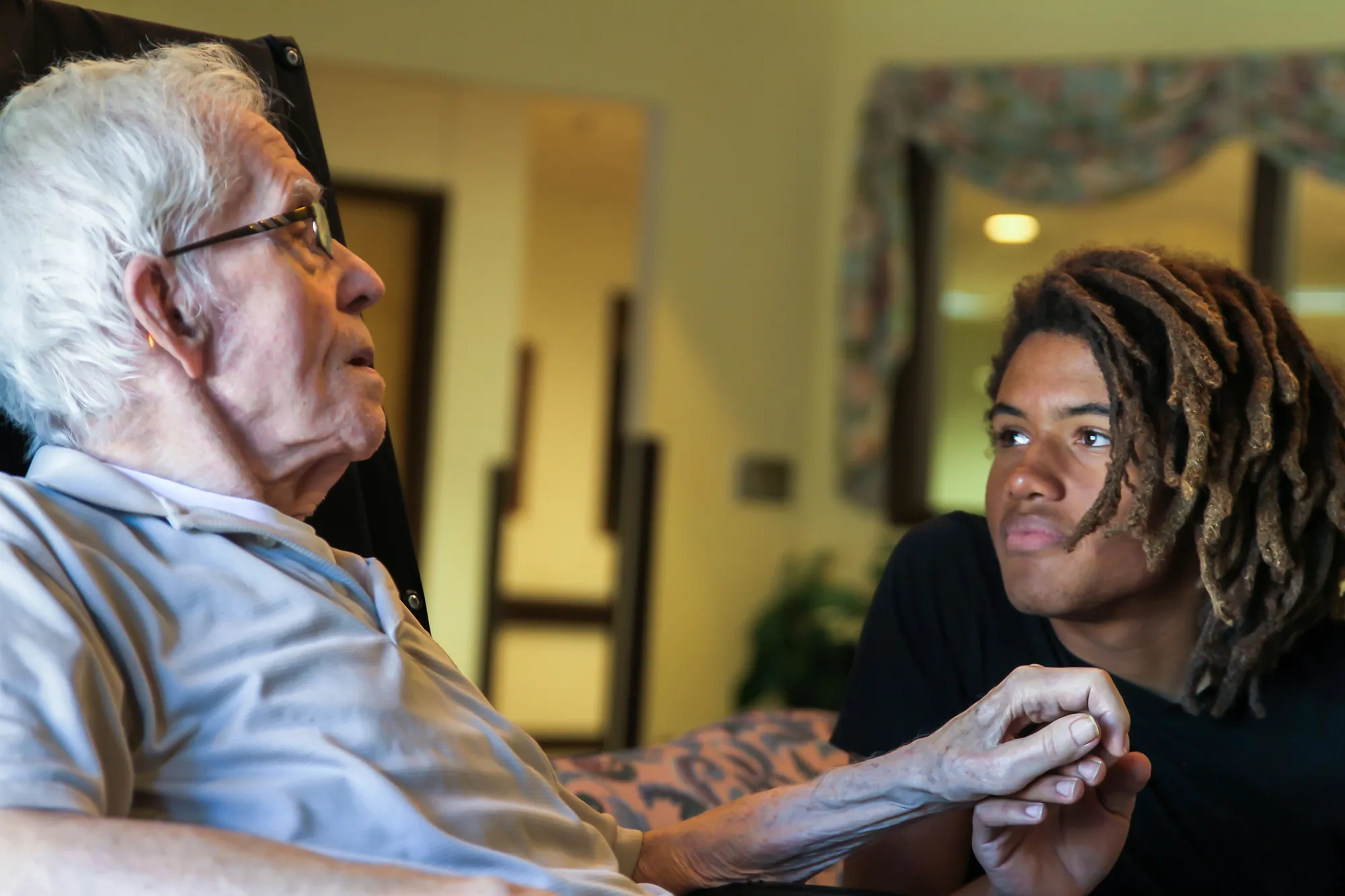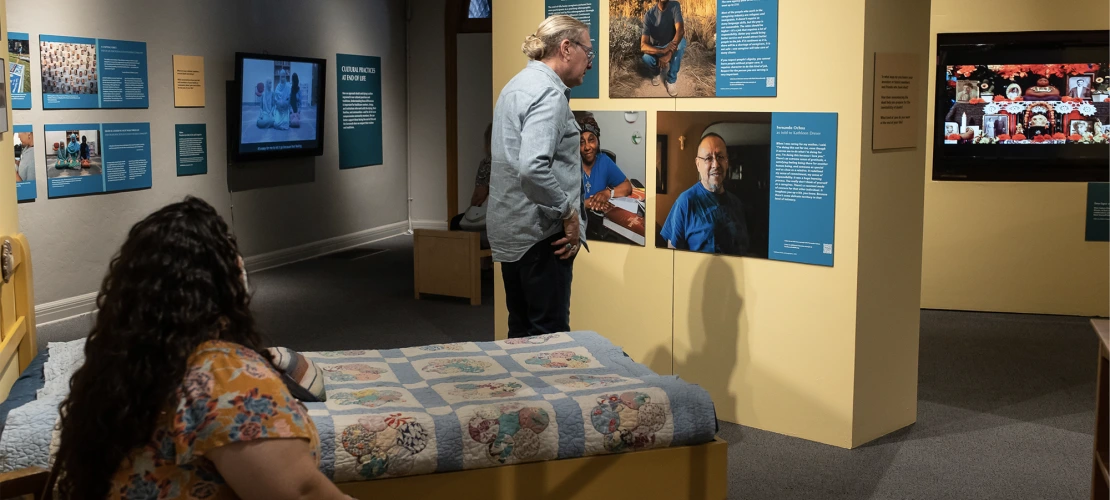An Exhibit on the Inevitable
My Journey Exploring End-of-Life Practices and Traditions

“Walking Each Other Home” asks us to seek out peacefulness, awareness and acceptance in the last stages of life.
/ Kathleen Dreier photo
In 2020, I experienced my first significant loss when a close family member suddenly passed away from COVID-19 complications. I had never grieved before or been exposed to conversations about death and the trauma that follows. I had my family to lean on and find comfort in, but I was still confused, angry and grappling with the idea of someone being here one day and then gone the next. After this experience, I came to realize there is only one thing guaranteed in life, and that is death.
Although the concept of death may feel scary to some, I believe we should not live our lives in fear of the inevitable. Exploring, processing and understanding concepts surrounding death and grieving can ensure we are prepared for what is to come. Other people can explore this topic, too, at the Arizona State Museum’s exhibit “Walking Each Other Home: Cultural Practices at End of Life,” running now through Feb. 25, 2023. The exhibit celebrates practices and traditions of preparing and planning for the end of life, grieving, memorializing and caregiving. Through interactive activities, videos and stories, visitors are encouraged to reflect on their personal relationship with death.
Walking through the exhibit was tough for me at first. As I began reading the displays, I came across a panel titled “What is a good death?” The phrase “good death” was coined by French historian Philippe Ariès and has become a pillar of the hospice movement. It encompasses the idea that by practicing peacefulness, awareness and acceptance toward the end of our own lives or a loved one’s life, we can prepare for a “good death.” By preparing ourselves mentally and spiritually for the passing of our loved ones, we can participate in healthy grieving practices and focus on celebrating their lives.
After reading this panel, I was mentally prepared to explore the rest of the exhibit.
I began by learning about the Tucson community’s cultural and religious traditions related to death and the importance of memorialization — even the art of tattoos as a form of remembrance.
One panel that caught my eye was an LGBTQI display explaining how mourning can be especially challenging for members of the LGBTQI community because many experience discrimination from family members. This can lead to feelings of isolation and alienation during times of mourning. Raising awareness about end-of-life practices supports LGBTQI people in finding safe spaces for grieving and living through loss.
As I walked to the back of the exhibit, I noticed a white-painted bicycle with flowers adorning its handlebars and wheels. These “ghost bikes” are public memorials placed near the locations of fatal bicycle-vehicle accidents as a reminder from the international cycling community of how vulnerable cyclists are.
At the end of the exhibit, I learned about caregivers who provide end-of-life care, performing intimate rituals and helping people who are dying feel comfortable and secure during their last days of life. These caregivers are often underpaid and lacking in recognition for the difficult work they do. I have a new appreciation for the courage, patience and selflessness of these caregivers in ensuring peace for others.
The exhibit prompted self-reflection and helped me understand the importance of normalizing conversations about grief and death.
No matter our religion, ethnicity or race, we all experience grief at some point in our lives. It is important to accept this reality so we can come together and ensure that when the time comes, we all get home safely.
If you would like to reflect on the topics discussed in this article, participate in the exhibit from your own home. Record a story related to one of these prompts to contribute to the exhibit:
• What is a cultural or personal tradition you have practiced in times of loss?
• Have you ever cared for someone at the end of their life? What did you learn from the experience?
• Is there something (or someone) that brought you solace in a time of grief?



